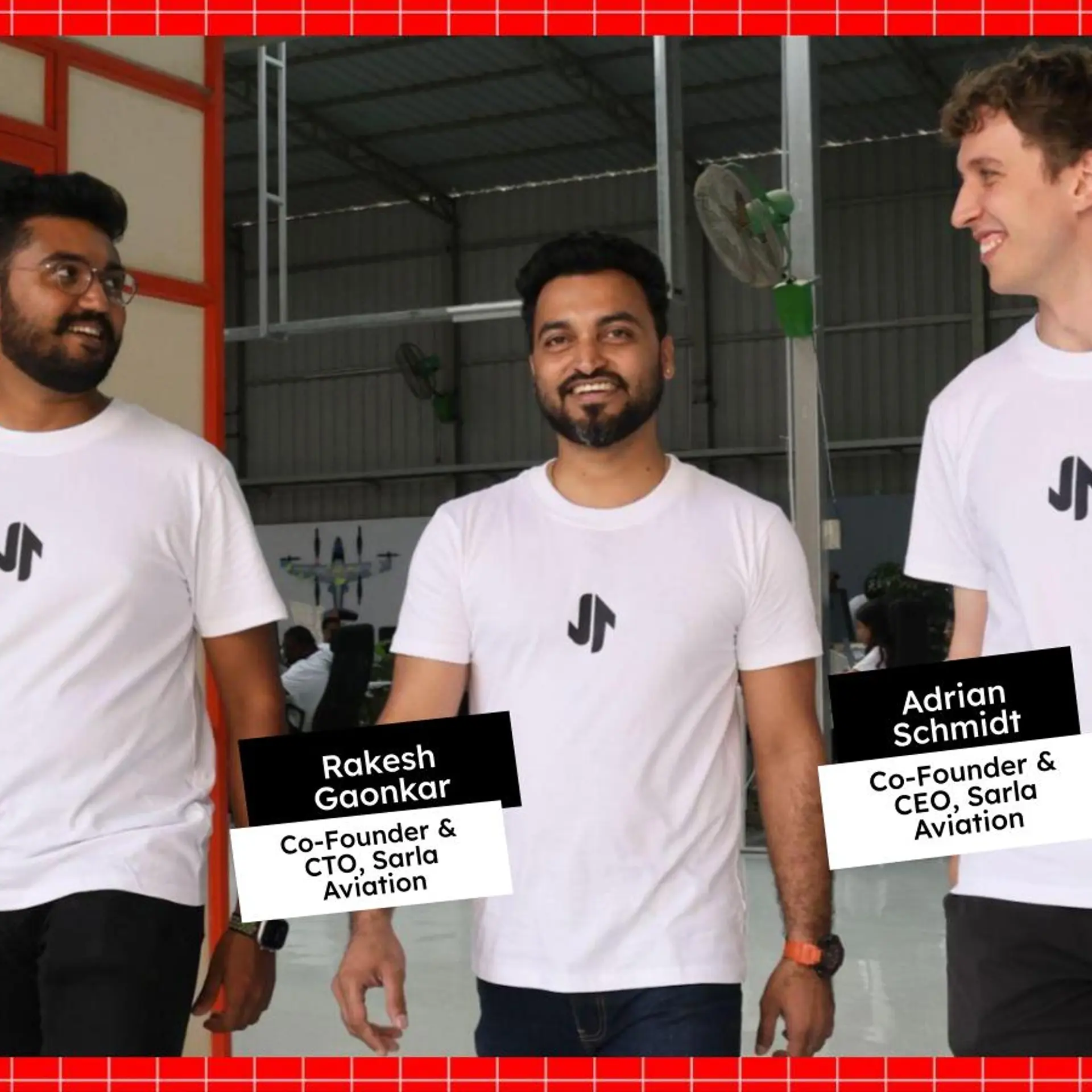
Vodafone
View Brand PublisherThe top 10 technology challenges that startups face and how to navigate them
From business models and management teams to customer experience and technology platforms, startups face a number of challenges that may trip them up in their long journey. Here are 10 key challenges founders need to identify and correct, to ensure that their entrepreneurial venture has a chance of success.
Skillsets
Founders with a business or design background may not understand the language of technology, let alone the latest trends in tools and platforms. Conversely, techie founders may not grasp the design and financial issues which go into building full-scale customer offerings.
Capacity building via online courses, peer discussions and mentors can help here. For example, the business model canvas by Strategyzer is a good tool for techies to understand management and strategy issues. Courses on commercialisation of technology at the MITs and IITs of the world can help managers understand technology evolution issues and manage innovation. Design thinking workshops and tools by companies like IDEO and Stanford’s. School can increase the design quotient of techies and managers.
The Product Mindset
Customers do not care really care what technology is used – all they want is a product or service which can meet their needs and aspirations. This requires a product mindset from the ground up, which will eventually lead to branding of the offering in a way that is attractive to the customer. Technology should be seen as an enabler, and not an end by itself.
Techies, managers and designers need to master product management and teamwork processes. Product management is now emerging as a discipline at the intersection of business, technology, and user experience. Product-first companies such as HP, Microsoft and Google have helped bring a shared vocabulary to the field; courses are offered on sites like UpGrad.
Product managers must be experienced in at least one of the three key areas (business, tech, UX), passionate about all three domains, and be able to converse with practitioners of all three. Product management also involves familiarity with strategic planning, marketing, and team development.
Project management
The software industry has often been plagued with over-runs in costs, time and effort. Project management of software and services continues to attract some of the best brains in the field to build a body of knowledge (BoK) for project management efficiency. Managing tech projects is a tough skill, and many young startups may flounder in their early steps.
Project managers can overcome some of these challenges with frameworks such as lean, agile, scrum, design sprints, directed discovery, and kanban. A range of easy-to-use and often free tools are available for startups, such as Asana (daily activities), Podio (complex projects), Kanban Tool (workflow visualisation) and Smartsheet (for spreadsheets).
Team roles and dynamics
Even in the field of technology, there are multiple roles and skillsets, ranging from architects and testers to developers and administrators. From the junior engineer all the way up to CTO, each role calls for different skills, experiences and mindsets, which can change over time.
At the individual and team level, this calls for continuous capacity building and changes in team configuration. Startups need to identify talent tracks in roles like lead software engineer, fullstack developers, JavaScript developers, data scientists and even content managers.
Cultural fit
The startup world is unlike the relatively smoother and structured corporate environment. Rapid changes in market and customer needs as well as pivoting by the founder will lead to frequent changes in the product direction. Techies in startups will, therefore, need to be more flexible than in larger firms, and deal with a culture of continuous adaptation.
While hiring techies, qualities to look for, in addition to skillsets, include capability to think of the big picture, willingness to enjoy challenges, ability to unblock obstacles, capacity to wear multiple hats, time management, and humility to create ‘psychological safety’ for newer team members as the company grows. There should be clear alignment on metrics for success and ethics in product development.

Continuous learning
Every other year there seems to be a new programming language, operating system upgrade, stack architecture, development framework or SMAC update. For engineers, learning tech skills does not end when they get a college degree – that is just the beginning.
Techies need to devote a significant amount of time to learning from online courses, books, conferences and peers. A number of MOOC offerings such as Coursera and Udacity allow subscription models where learners can sign up for courses as well as updates on refresher modules on tech topics. Developer conferences and hackathons offer hands-on opportunities to brush up on skills and emerging platforms, and network with tech peers.
Proprietary versus Open source
There are convincing arguments from both sides on when proprietary code or open source code should be used, depending on the context (this extends to APIs and standards as well). Comparison features include quality, robustness, customer support, expense, upgrades, market penetration, and emerging trends.
For example, some developers work within the Microsoft or Oracle suite of products. Those wishing to use open source tools can use LibreOffice (functional modules for word processing, spreadsheets), Mozilla Thunderbird (email management), TurboCASH (accounting) and WordPress (web publishing).
Choice of channel
For digital offerings, the customer contact can be via channels such as desktop, mobile, kiosk, or IoT, and variations of these. At times, startups have been swept up by hype about which of these channels is best. For instance, many high-profile e-commerce startups mistakenly abandoned the desktop and chose to go “mobile only” for customer interface, before retracting their moves and developing for all platforms.
E-commerce retailer Myntra discontinued its mobile website to adopt an app-only model in 2015, but brought it back a year later. Early online check-in for airlines was only via the desktop web – but later expanded to mobile apps and airport kiosks. Techies and designers need to compare and contrast the benefits of each such channel as they roll out interactive customer touchpoints.
Ignoring security and privacy
Many high-profile instances of hacking and loss of confidential information due to lost or stolen devices have revealed that security is either ignored or tacked on as an afterthought in tech development. Tech security and risk management should be a key priority for startups right from Day One.
Companies like Symantec, McAfee and QuickHeal offer solutions for startups to secure their devices, data and online workspaces; similar approaches should be used by startups to secure their own offerings to customers.
There are also tough laws in each country about privacy of consumer data. Techies and their business heads should be clear about what kinds of customer data is being captured, what kinds of consent agreements are implied, how this data will be used, and who this data is being shared with. Techies should clearly trace and log all this data for the scrutiny of internal and external auditors.
Hardware: prototyping and supply chains
Hardware is driven by rapid prototyping and global supply chains of components, and tech firms in the hardware space will quickly realise that design and development requires mastery of techniques like 3D printing, virtualised products, and even frequent trips overseas to build close connects with suppliers in countries like China.
The first Maker Faire was launched in 2006, and there are now many such community events held around the world. These events have a mix of hobbyists and product professionals. Inexpensive boards (such as Arduino, Raspberry Pi, and BeagleBone) make electronics prototyping accessible to everyone; a number of enabling startups (eg. MakerBot, Adafruit, SparkFun) have also sprung into the game to help other founders develop products.
Hardware products fall into four categories: connected devices (eg. Nest, SmartThings, Belkin’s WeMo, Lowe’s Iris Smart Home Management System); wearables (Quantified Self: eg. Nike+ and Fuelband, UnderArmour’s Armour39), robots (eg. Fetch Robotics, Rethink Robotics, Agrobot, UAV or unmanned aerial vehicles such as DroneDeploy, and ROV or remotely operated vehicles); and designed products (eg. Quirky).
Founders should be able to segment the market in terms of needs and behaviours, and differentiate their proposed offerings. For example, Jawbone began with noise-cancelling headsets for soldiers, and then diversified into other kinds of wearables. Lumo Body-Tech, co-founded by Monisha Perkash, conducted extensive customer research with 30 different iterations for its body posture sensors; it finally arrived at the monitor band design instead of adhesives or garment tack-ons.
Founders will need to master terms such as design for manufacture (DFM), design for assembly (DFA), design for test (DFT), design for cost (DFC), engineering verification test (EVT) and engineering change order (ECO).
A number of hardware accelerators offer formal design reviews and mentorship in design, manufacturing, logistics, reliability, standards, and testing. Prominent players in this space include Lemnos, Y Combinator, 500 Startups, TechStars, PCH, AlphaLab Gear, Flextronics Lab IX, Logistica Asia, HaxAsia and HAXLR8R (‘hack-celerator’ programme in China).
In sum, becoming aware of the above mentioned types of challenges and taking corrective steps is key for startups to harness the transformative power of technology. Forewarned is fore-armed, and it helps startups to learn not just from their own mistakes but from others’ mistakes as well in order to keep their tech foundations intact.
Liked this article? Read more such educative and inspiring stories here.







